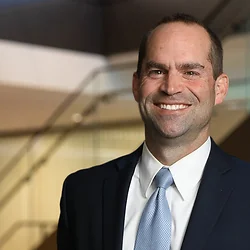Additional Guidance for FFCRA Paid Sick Leave and Paid FMLA Compliance
On March 26, 2020, the U.S. Department of Labor (DOL) issued additional guidance, in the form of “Frequently Asked Questions,” related to the Families First Coronavirus Response Act (FFCRA). The DOL previously provided guidance discussed here: U.S. Department of Labor Publishes Guidance for Paid Sick Leave and Paid FMLA Compliance
The following are some important highlights from the latest guidance provided by the DOL:
Worksite Closings and Employee Furloughs
The new DOL guidance provides that if an employer closes its worksite, either because of lack of business, or because it was required to close pursuant to a Federal, State, or local directive, an employee is not eligible for paid sick leave or expanded FMLA leave under the FFCRA. The DOL provides three scenarios based on the date of the closure:
- Worksite closes before April 1, 2020: employees are not eligible for paid sick leave or expanded FMLA leave.
- Worksite closes on or after April 1, 2020, but before an employee goes on leave: the employee is not eligible for paid sick leave or expanded FMLA leave, even if the employee made a request for leave prior to the closures.
- Worksite closes on or after April 1, 2020, while employee is on paid sick leave or expanded FMLA leave: the employer must pay the employee for any paid sick leave or expanded FMLA leave taken before the closure, but does not have to pay such benefits after the date of the closure.
If an employer re-opens a worksite during the effective period of the FFCRA (April 1, 2020 to December 31, 2020) and an employee resumes work, the employee is then eligible for paid sick leave and expanded FMLA leave as warranted pursuant to FFCRA conditions.
If an employer remains open, but furloughs an employee (i.e. puts the employee on unpaid leave) because it does not have enough business or work for the employee, the employee is not entitled to paid sick leave or expanded FMLA leave.
Employee’s Inability to Work
The DOL has clarified that an employee is “unable to work” if an employer has work for the employee, but one of the six COVID-19 qualifying reasons set forth in the FFCRA prevents the employee from being able to perform that work, either at the employer’s place of business or by means of telework.
If an employee is unable to perform teleworking tasks because of the need to care for a child whose school or place of care is closed, or child care provider is unavailable, because of COVID-19 related reasons, the employee is permitted to take expanded FMLA leave – unless the employee is able to telework while caring for the child.
Documenting Employee Leave
When an employee requests paid sick leave, an employer must request and retain the following information: (1) employee’s name; (2) qualifying reason for requesting leave; (3) statement that the employee is unable to work, including telework; and (4) the date which the leave is requested. The employer must also request and retain documentation of the reason for leave, such as written documentation by a health care provider advising the employee to self-quarantine due to concerns related to COVID-19, or, in the case of a school closure, a notice that has been posted on the school’s website regarding the closure.
Importantly, employers will need the above information and documentation in order to claim a tax credit under the FFCRA.
Intermittent Use of Expanded FMLA Leave
The new DOL guidance provides that allowing intermittent use of paid sick leave and expanded FMLA leave is largely left to the discretion of the employer.
Employees Working On Site:
If an employee is working at an employer’s worksite, paid sick leave must be taken in full-day increments. Further, such leave cannot be taken intermittently if the leave is being taken because the employee: (1) is subject to a Federal, State, or local quarantine or isolation order; (2) has been advised by a health care provider to self-quarantine; (3) is experiencing symptoms of COVID-19 and is seeking a medical diagnosis; (4) is caring for an individual who is subject to a quarantine or isolation order, or has been advised by a health care provider to self-quarantine; or (5) is experiencing any other substantially similar condition specified by the Secretary of Health and Human Services.
An employer may, at its discretion, allow an employee to take paid sick leave or expanded FMLA leave intermittently if the employee is taking such leave to care for a child whose school or place of care is closed, or whose child care provider is unavailable.
Employees Teleworking:
If an employee is teleworking, an employer may (but is not required to) allow an employee to take paid sick leave or expanded FMLA leave intermittently while teleworking.
Unemployment
An employee may not collect unemployment insurance benefits while simultaneously receiving paid sick leave and/or expanded family and medical leave.
Health Insurance
If an employer provides group health coverage and an employee has elected that coverage, the employee is entitled to continue that coverage during paid sick leave and/or expanded FMLA leave. An employee must continue to make any normal contributions to the cost of that health coverage.
Tax Credits
While an employer may choose to pay its employees in excess of the FFCRA requirements, an employer cannot claim, and will not receive tax credit for, those amounts in excess of the FFCRA’s statutory limits.
The full Department of Labor guidance, including the Frequently Asked Questions issued on March 26, 2020 (numbers 15-37) can be found here: https://www.dol.gov/agencies/whd/pandemic/ffcra-questions
Related Professionals
- Partner
- Partner
Related Practices & Industries
Sign-Up
Subscribe to receive firm announcements, news, alerts and event invitations.



